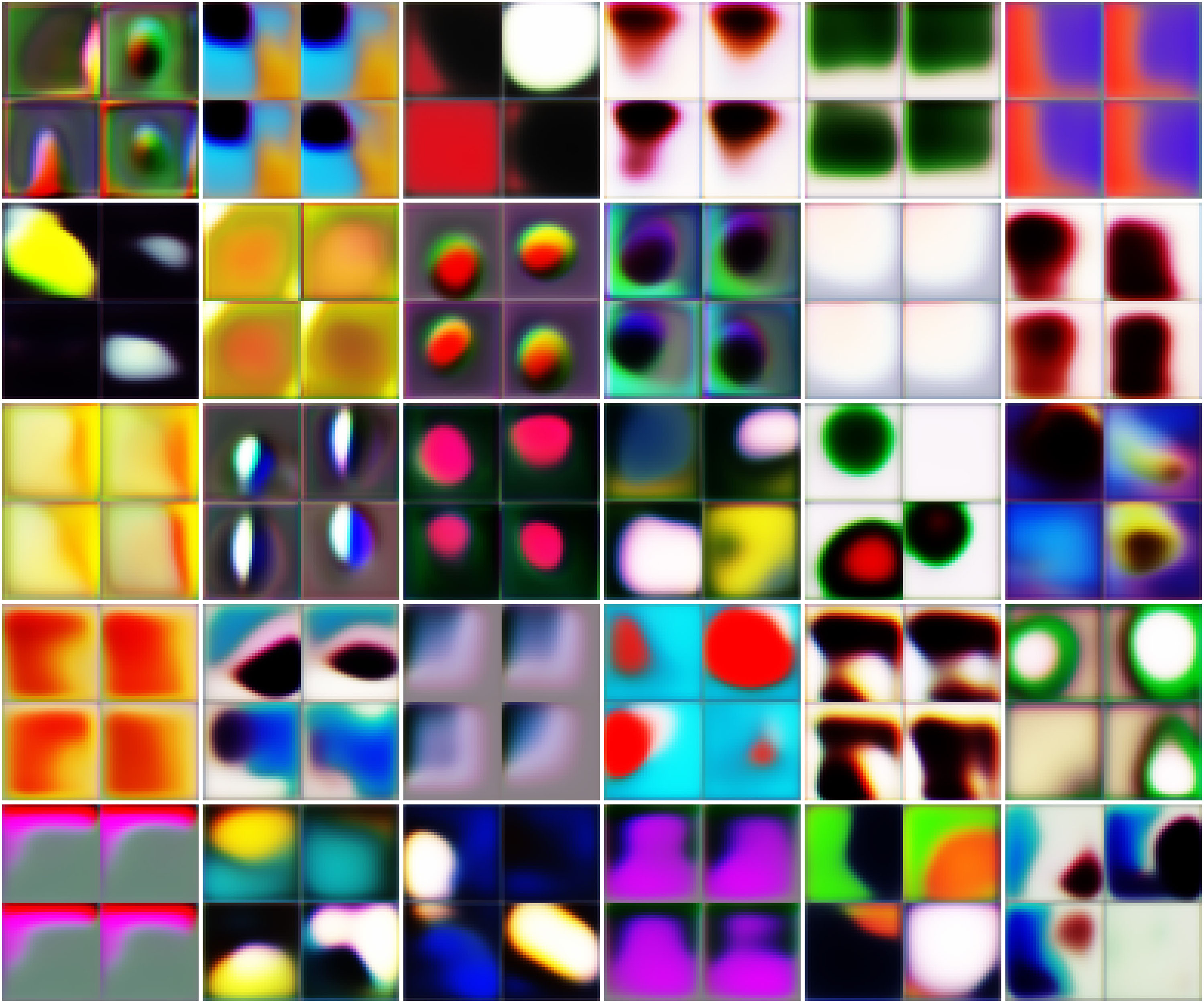STUDIO KEVIN ABOSCH: EARLY EPOCHS (2017)
Kevin Abosch’s 2017 project, EARLY EPOCHS, is a key contribution to the conversation
between human creativity and AI. In this work, Abosch employs Progressive GAN (PGAN)
technology to explore both the algorithms behind image generation and the underlying data
that informs them. By training the PGAN on a personal archive of mobile phone photos, the
artist encourages us to reflect on the often subtle connection between our everyday
experiences and the digital data that is increasingly shaping our cultural landscape. Each of the 30 works in the series is composed of a grid of four images, captured from the
nascent stages of the GAN’s learning process—its early epochs. Here, before the network has
had the opportunity to refine and settle into a coherent, detailed representation, the raw,
abstract outputs reveal a visual form of "surface truth." These images encapsulate an
ephemeral quality: an arresting, colorful abstraction that resists the urge to become
immediately figurative or literal. Instead, they offer a window into the algorithm's formative
steps, exposing a vulnerability and openness that is rarely visible in fully-trained models.
The intentional choice to highlight early epochs is both conceptually and historically
significant. While PGAN was engineered to produce ever more detailed, larger images as
training progresses, Abosch’s subversion of this objective underscores the potential of what
lies beneath the surface. By throttling and reconfiguring the algorithm’s natural trajectory, he
foregrounds a process that is typically obscured by the pursuit of realism. The work thereby
challenges our conventional understanding of machine learning as a pathway to perfection,
instead proposing that beauty and meaning can emerge from the unrefined, the experimental,
and the provisional.
In EARLY EPOCHS, Abosch navigates the tension between control and randomness. His
project is not merely a commentary on technology; it is an exploration of the boundaries
between the artist’s intentionality and the algorithm’s emergent behavior. The resulting
images, with their vibrant hues and abstract forms, evoke both the fragility and the promise
inherent in early creative expression—whether human or machine-generated.
Historically, this project situates itself at the intersection of art and technology at a time when
the implications of artificial intelligence were beginning to permeate mainstream discourse. It
stands as an enduring testament to the potential of AI as a creative tool, challenging us to
reconsider the processes by which meaning is generated in the digital age.
“In subverting the algorithm from its directive to
trend towards fidelity, I’m able to glean meaning
before the machine has a chance to distract me
from my mandate as an artist.” - Kevin ABOSCH
Technical notes: Each work is comprised of a grid of 4 outputs from the model. Each
output was generated at 512x512 pixels creating a 1024x1024 pixels composite image
which was further up-scaled to 2048x2048 pixels using “nearest neighbor” resizing.
The color space of each work is sRGB and the file format is PNG. These works were
created in December 2017 and minted to the Ethereum blockchain in January 2025.
 EARLY EPOCHS (2017)
EARLY EPOCHS (2017)